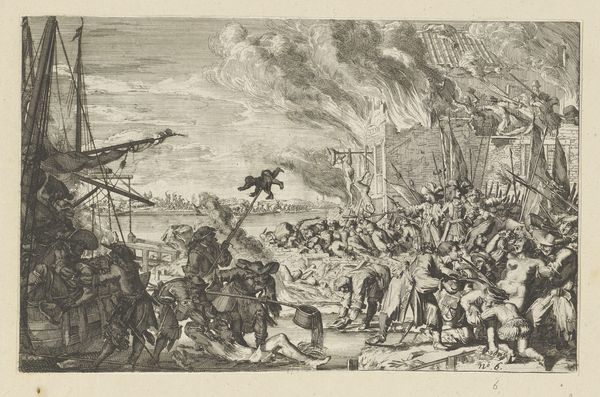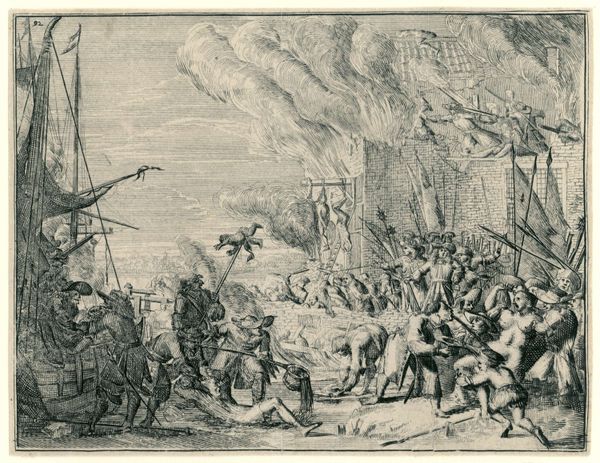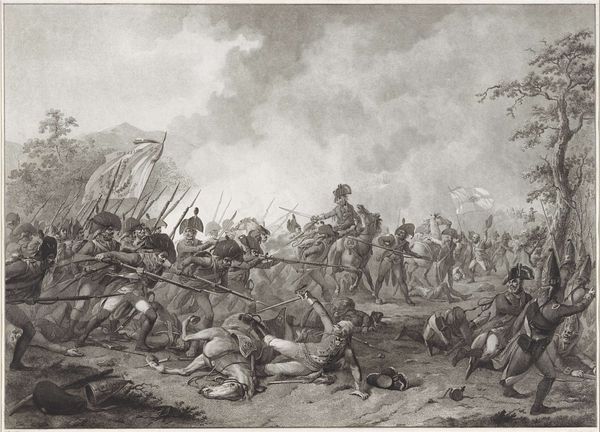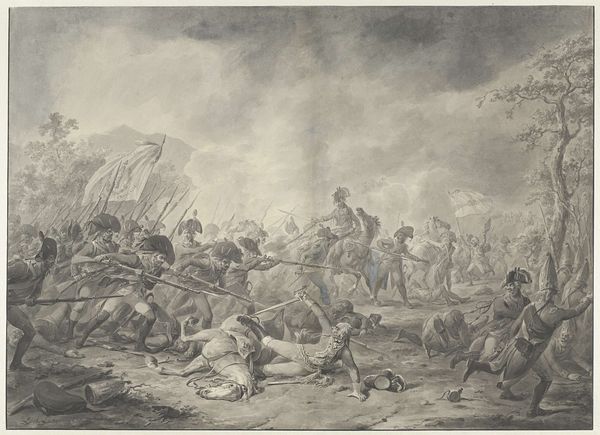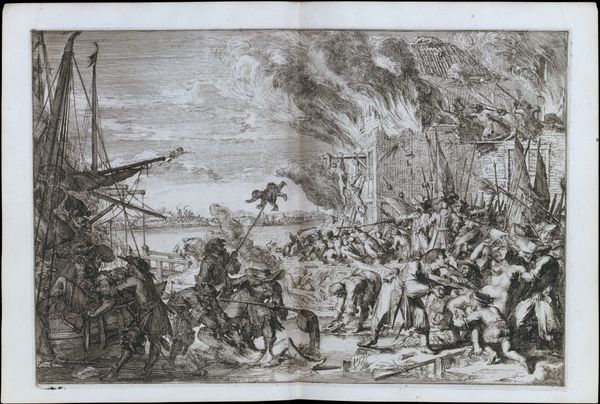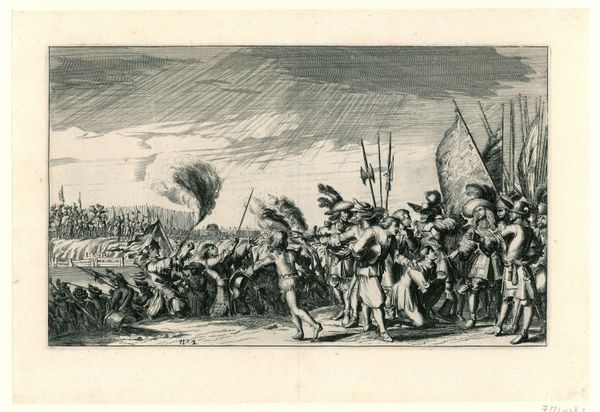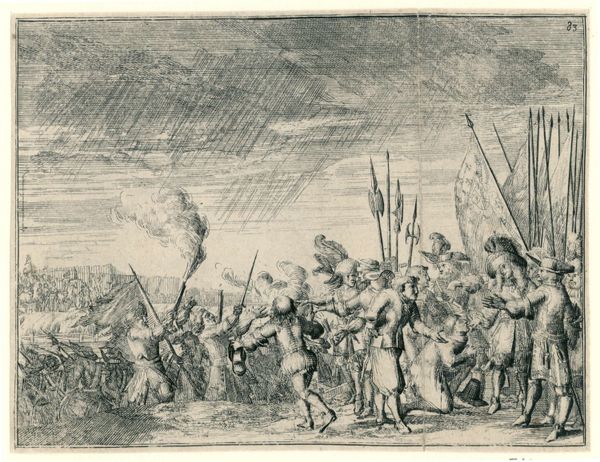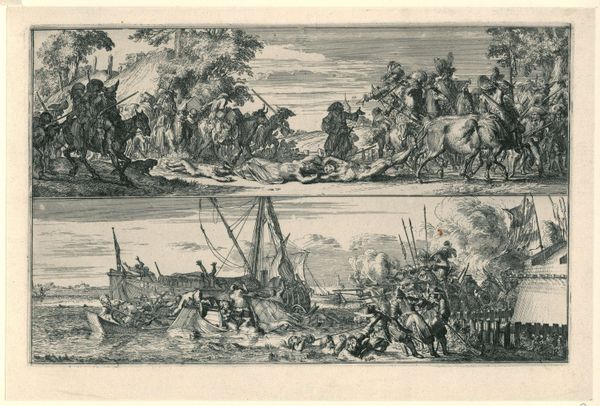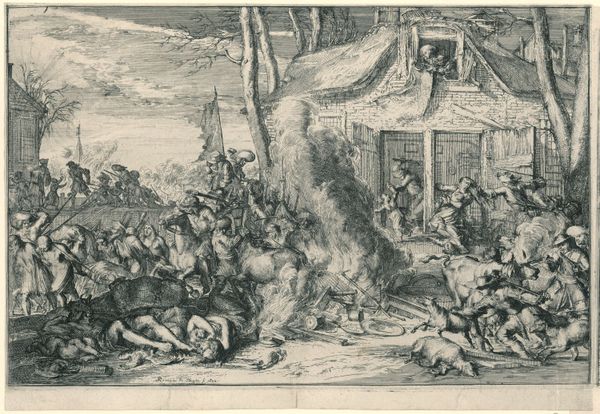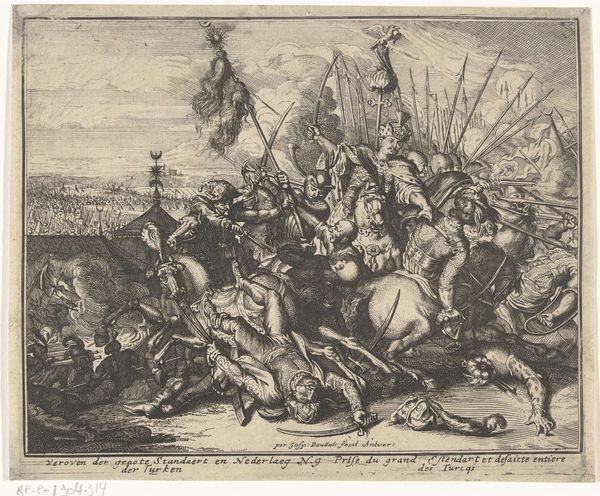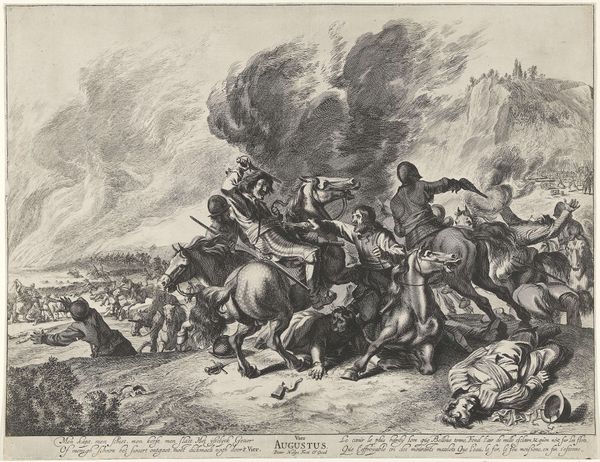
print, engraving
#
ink drawing
#
narrative-art
#
baroque
#
pen drawing
# print
#
landscape
#
history-painting
#
engraving
Dimensions: height 215 mm, width 308 mm
Copyright: Rijks Museum: Open Domain
Romeyn de Hooghe made this print of atrocities in a waterfront village in 1672 using etching and engraving techniques. The stark contrast of black lines on white paper delivers a powerful visual punch, emphasizing the chaos and violence depicted. The method of production here is critical. Etching involves coating a metal plate with wax, scratching an image into the wax, and then immersing the plate in acid. The acid bites away at the exposed metal, creating grooves that hold ink. Engraving, on the other hand, uses a tool to directly cut lines into the metal. The combination allowed de Hooghe to create intricate details and a wide range of tones, from the deepest shadows to the brightest highlights. Prints like this one had a crucial function: the relatively inexpensive process allowed images to be widely distributed and consumed, shaping public opinion and constructing collective memory. The graphic horror shown here surely fueled anti-French sentiment. This print is a prime example of how craft and design can be intertwined with politics and social commentary.
Comments
No comments
Be the first to comment and join the conversation on the ultimate creative platform.
